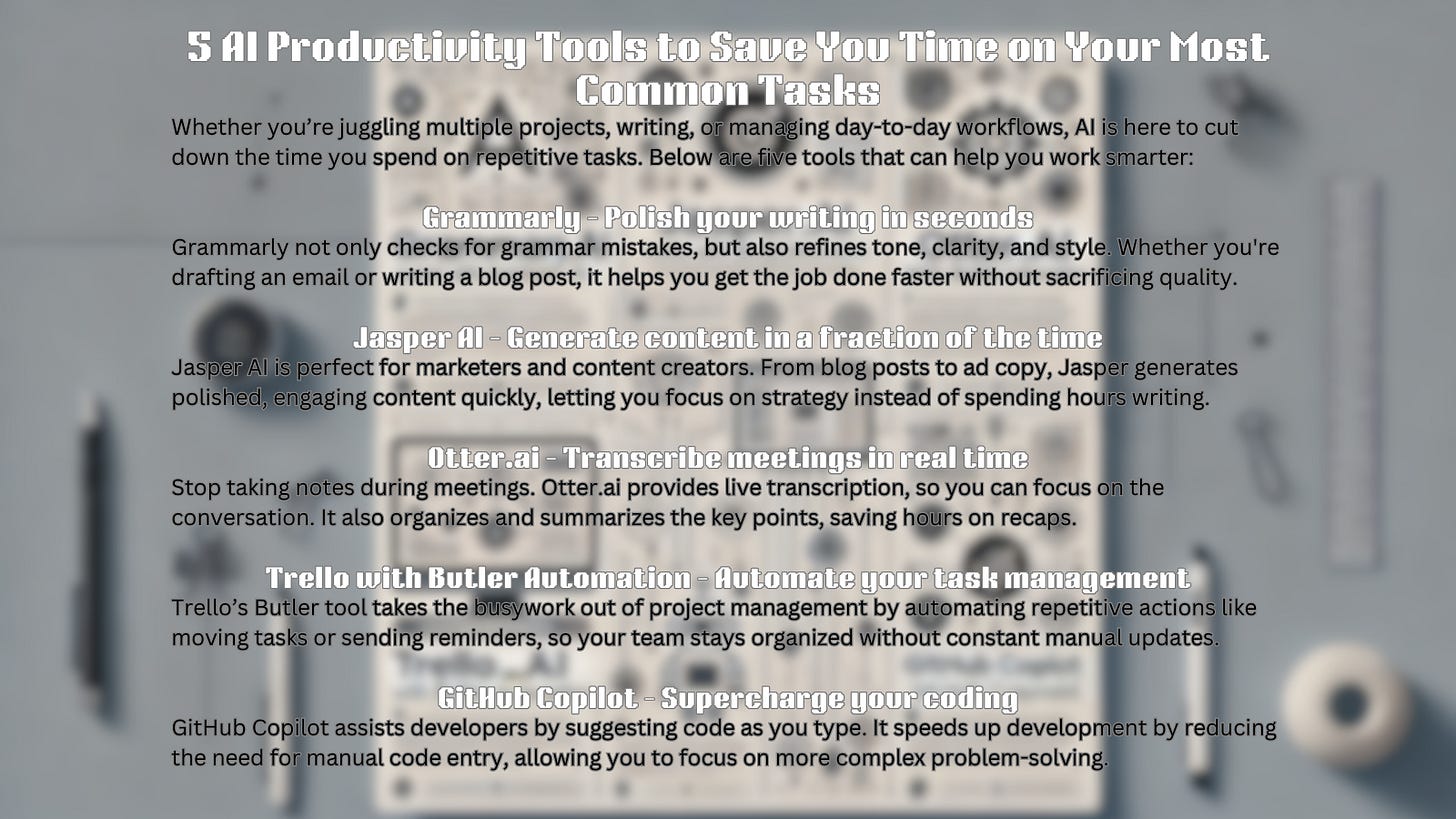I’m starting to contribute to newspapers and magazines again. For a decade, this was my job.
Over the years, I’ve contributed marketing copy to Bad Robot (J.J. Abrams’ company), Cards Against Humanity, education and news blogs, and business journalism publications.
It was a fun and gratifying career, but also mentally exhausting.
Doing it every day with no sick time or vacation for a decade zapped the creative juices right out of me. I lost touch with what I wanted to write because I lost touch with myself.
To start, I had to move a lot of copy to make a decent living. And, for a while, I did.
Unfortunately, the types of jobs that made up most of my work—cheap, crappy $30 articles for SEO agencies targeting specific keywords—weren’t sustainable.
As AI advanced, I knew the actual profession wouldn’t be either.
This realization led me to seek full-time employment in May 2018. By October of that year, I was the new Public Affairs Officer at the Fort Smith Police Department.
Six years later, I’m still proud to be a part of the FSPD. We have a great vision and the full support of our community—every segment of it, which isn’t too common nationally.
I have no desire to leave. But, until last year, I wasn’t doing anything to nurture the creative side that my former career had fulfilled (and, eventually, killed).
New Creative Outlets, Same Boring Problems
Innovation Dispatch, my daily (Monday-Friday) newsletter covering AI news and tools started as a way to reconnect with that part of myself. You can subscribe to it here for free.
So far, I’ve churned out 275 of them. But, it’s not lost on me that the newsletter is primarily aggregation. I knew I wanted to do something more involved, which led me to publish my first Substack in late July 2024.
Since then, I’ve reconnected with some old clients and started landing some work here and there. Thankfully, I’m able to do so with a boost from AI. These tools weren’t ready to use when I left journalism and copywriting.
Now, they are. That means the most tedious parts of my former job are on the chopping block.
Transcribing interviews
Taking notes
Organizing material
Outlining the piece
Iterating drafts
Editing and proofreading
For pieces with subjects to interview and research to compile, I’m lucky if it takes me just three hours to deliver the goods. That set me thinking: how much time could I save using AI in the right spots?
Case Study: How I Slashed My Work Time By 70%
A recent opportunity allowed me to find an answer. I had a 30-minute appointment scheduled with an executive I won’t name here. We got right down to business.
The whole interview was done in 20. I recorded it on my phone. Normally, transcription would take around 3.5 times the length of the recording.
Using TurboScribe (three free transcriptions a day, and no, that’s not an affiliate link), I shrank that 70-minute timespan to three minutes.
Next, I downloaded the PDF transcription and uploaded it to ChatGPT. I told ChatGPT to write a basic first draft based on the transcription and to give it a “news” focus rather than a “feature” focus.
It delivered 350 words of my 1,000-word target in about 10 seconds.
The piece wasn’t ready to publish, but it did act as a valuable roadmap for how the article should be written. It only lacked some market research and direct quotes from the interview.
Once again—ChatGPT to the rescue!
I had it create a bulleted list of direct quotes contributed to the interviewee. (It listed eight, verbatim.)
Then, I used a Custom GPT to pull scholarly market research for the subject I was writing about. One of the five sources clicked with me. I saw how I could add it to the final piece and tie it into the interviewee’s quotes.
From the moment I pressed record to the time I turned in the final product, 60 minutes had passed. Compared to what a piece like this would have taken me six years ago, I’d slashed my work time by nearly 70%.
But this experience made me think—how much time is AI really saving us? Is it as simple as plugging it in, letting it do most of the heavy lifting, and reaping the benefits?
Or is there a danger that, in our rush to embrace AI, we’re overlooking a potential trap—what I’ll call the productivity mirage?
AI’s Role in Professional Sectors: Marketing, Writing, and Coding
To answer, you’ve got to look beyond the one-off successes like the one I detailed above. AI’s impact stretches far across professional sectors, especially where it can supercharge output in areas like marketing, writing, and coding.
And yeah, I’ll be the first to tell you: the time savings are real.
But the deeper question is this—are we just speeding things up for the sake of speed, or are we making sure that the quality of what we produce matches the volume? That’s the heart of the matter, and it’s where the productivity mirage comes into play.
Marketing: Automation at Scale
Let’s start with marketing, where AI is really hitting its stride. Tools like Jasper and ChatGPT are cranking out blog posts, ad copy, and social media content at speeds that would’ve been unthinkable two years ago.
For marketers, this is a game-changer.
The turnaround time from ideation to execution has been obliterated. Need to post about a product launch? AI can get you 10 different takes in the time it would’ve taken you to write one.
But here’s the rub: fast doesn’t always mean effective. While AI might churn out the volume, how much of that content is meaningful, resonant, or engaging? Are marketers just flooding the zone with more content, more noise—more of the same?
The real test is whether this influx of AI-driven content leads to genuine connection with audiences—or if it’s just filling space. If it’s the latter, what we’re saving in time, we might be losing in relevance.
Writing: Drafts at the Speed of Thought
In writing—my field—AI’s ability to streamline the drafting process is nothing short of a revolution. My time-cut on that journalism piece wasn’t a fluke.
Writers—whether journalists, novelists, or corporate communicators—are seeing similar boosts. AI can draft articles, suggest structures, and even do basic research. The days of staring at a blank page for hours are numbered.
But AI can’t do it all.
Sure, it spits out that first draft fast, but then comes the real work. Editing. Revising. Shaping.
Making sure that what you’ve written doesn’t just say something, but says it in the right way, with the right voice, the right level of thoughtfulness.
AI can get you a draft in record time, but that draft is just a starting point. The danger is in thinking that speed equals quality—that because it’s fast, it’s also good.
That’s where the productivity mirage shows up. You think you’re saving time, but you’re just trading one kind of work for another.
Coding: Writing Code, One Suggestion at a Time
For developers, the rise of AI tools like GitHub Copilot has transformed the way code gets written. What used to take hours—writing, debugging, testing—can now happen in a fraction of that time.
AI can suggest lines of code, troubleshoot errors, and automate repetitive tasks. It’s like having a co-pilot in the cockpit, taking care of the small stuff so you can focus on the big picture.
But—and this is important—AI in coding isn’t perfect. Sometimes, the code it spits out is wrong. Sometimes it’s buggy. The time you saved writing that code can quickly get eaten up by debugging it, going line by line, making sure it works the way it’s supposed to.
Developers, just like writers, can fall into the trap of thinking, “Well, the AI did it, so it must be right.” Not always. The productivity mirage strikes again: faster to done doesn’t always mean faster to good.
The Productivity Mirage: A Warning Sign
At the heart of all this is the fundamental question: Is AI truly saving us time, or is it just creating the illusion of productivity? That 67% reduction in writing time was real, but only because I knew when to step in and take control of the process.
The temptation to rely too heavily on AI is strong—too strong. If we’re not careful, we’ll end up believing we’re working smarter, when really we’re just working faster, cranking out more, but without the oversight or the thoughtfulness that quality work requires.
The truth is, AI isn’t going anywhere.
It’s going to keep saving us time, but we have to be mindful about how we use it. The productivity mirage is real—speed can mask the need for depth, for quality, for human oversight. And if we’re not paying attention, all the time we think we’re saving could be time we end up spending fixing mistakes or catching up on what the AI missed.
Worse, we may not end up catching those mistakes at all. And, depending on your sector, the results can gauge from humiliating to dangerous.
In the end, AI is only as good as we allow it to be. It can be a powerful tool for efficiency, but only if we stay vigilant, ensuring that the time we save isn’t just an illusion.
Have you stepped back to see whether AI is saving you time? Can you put a number to it? I’d love to know what your experiences have been. Please, feel free to share them here or email me your results and questions.





Productivity mirage - I like this concept. Well put